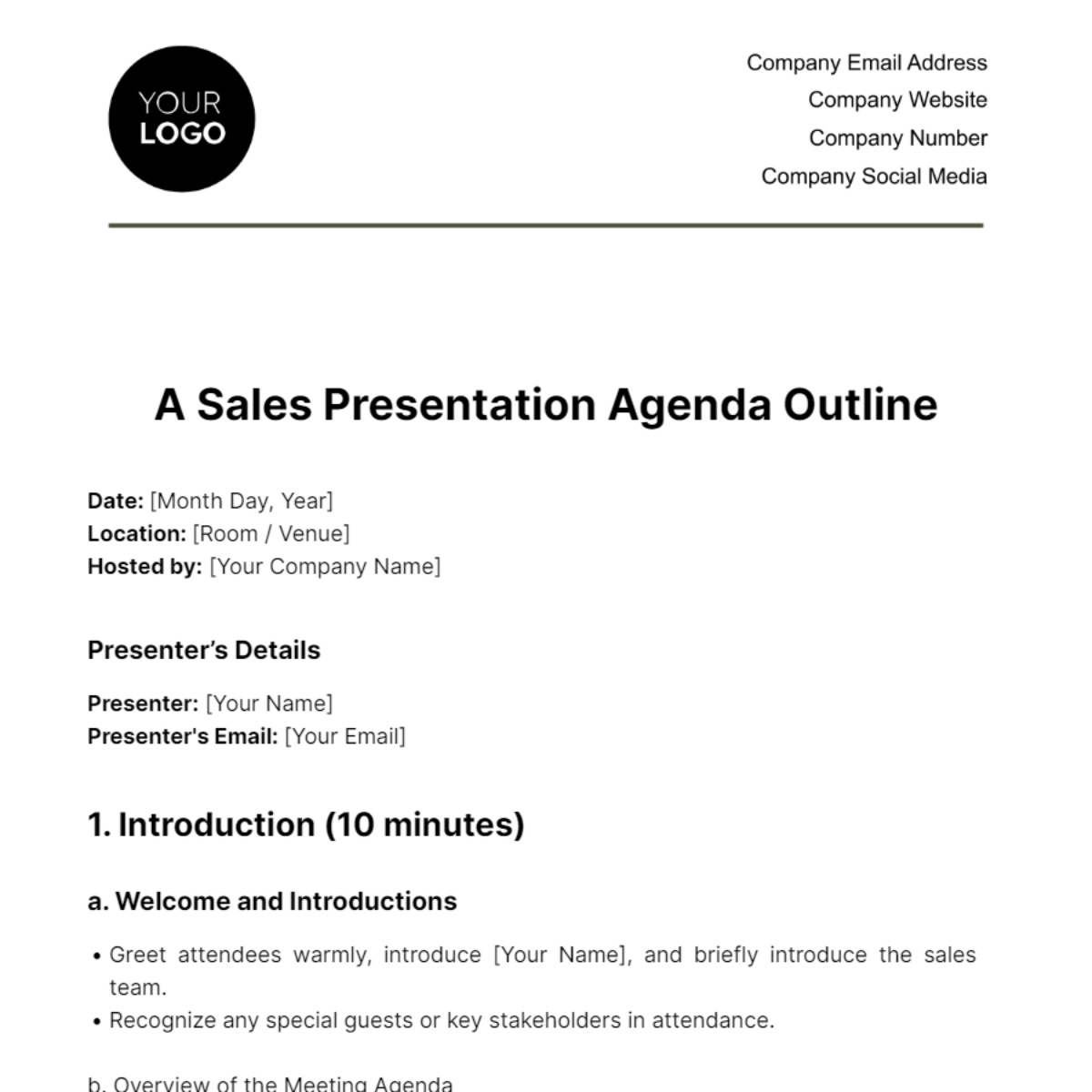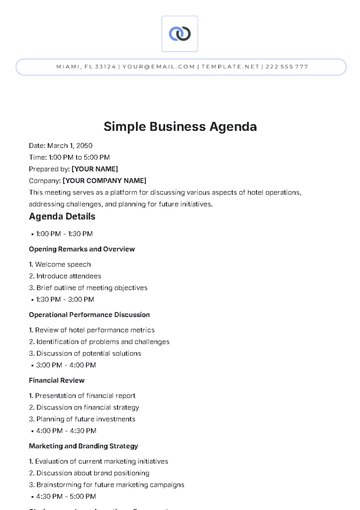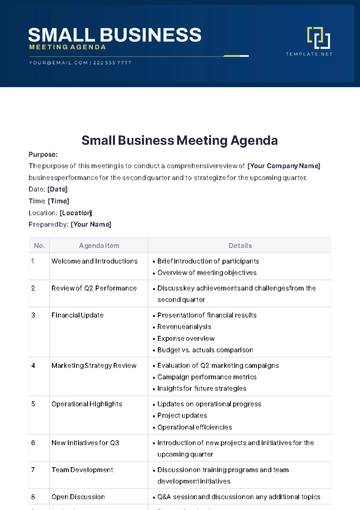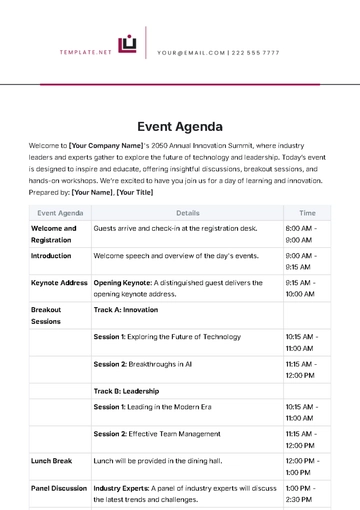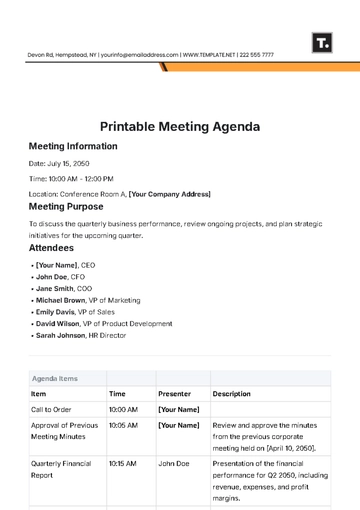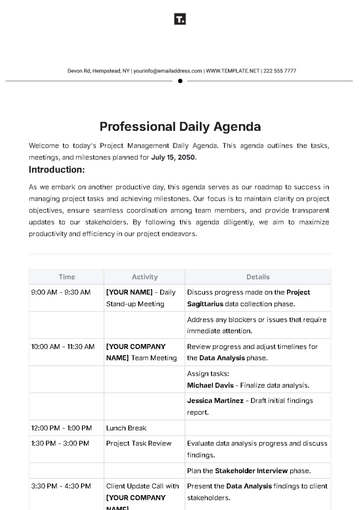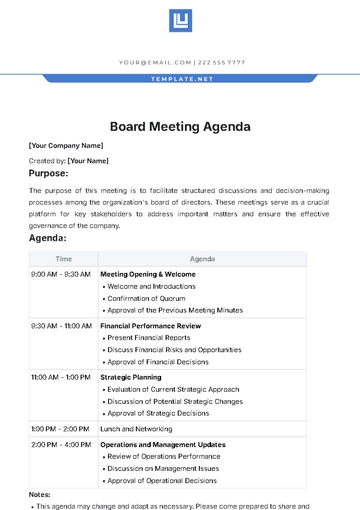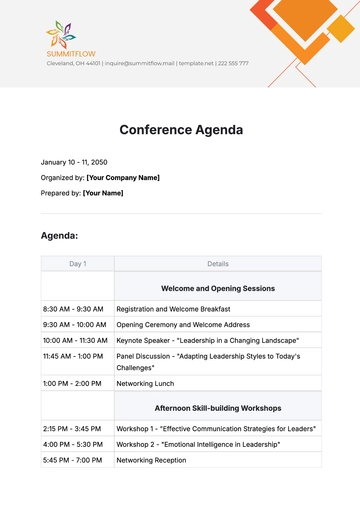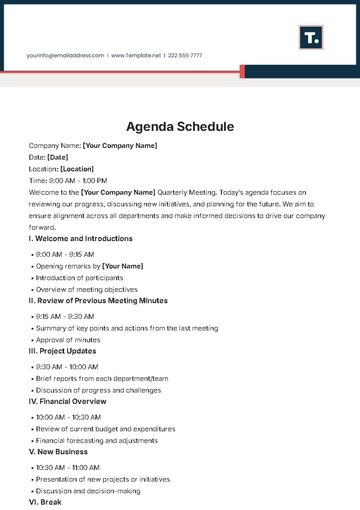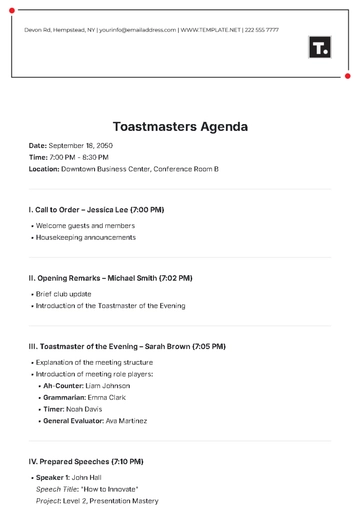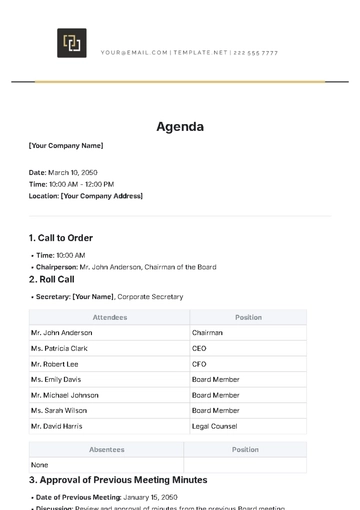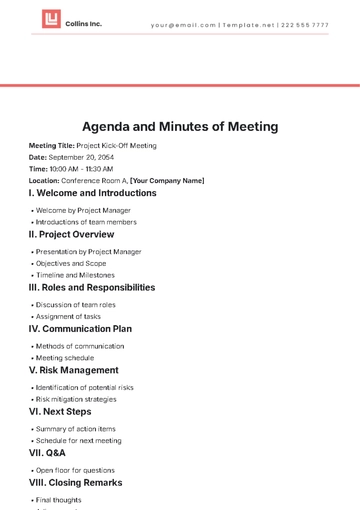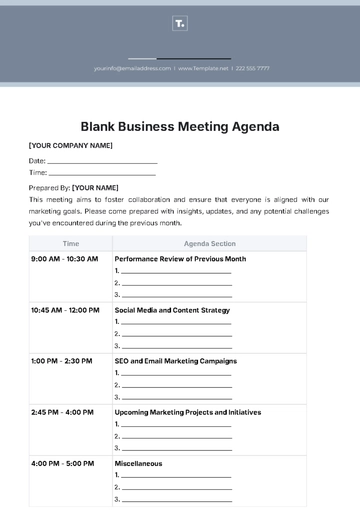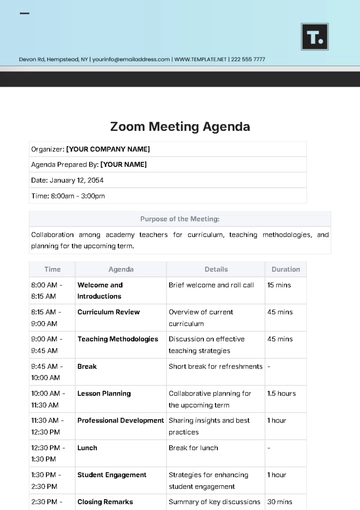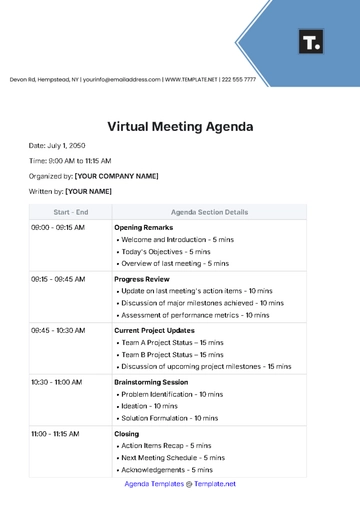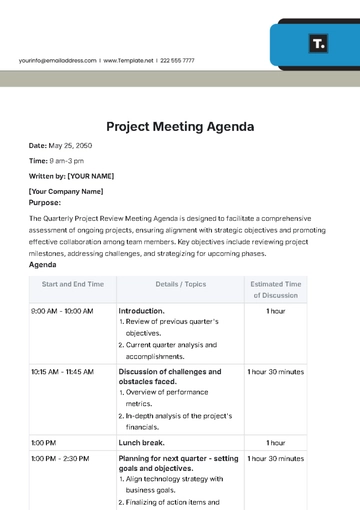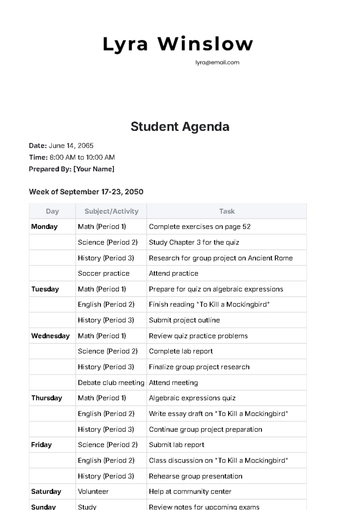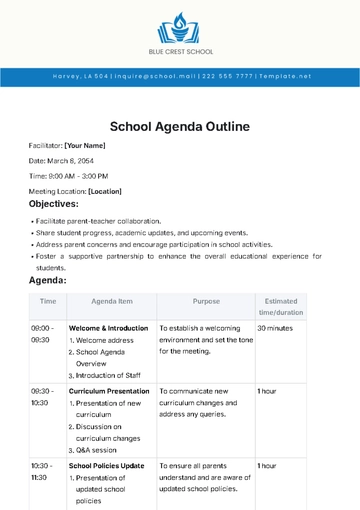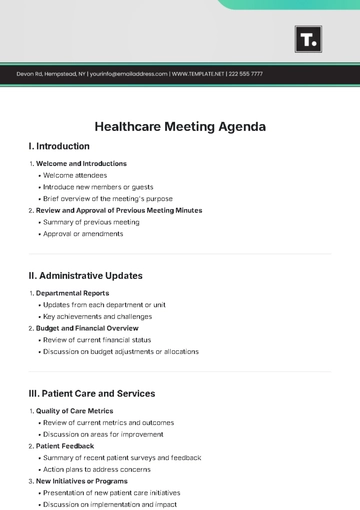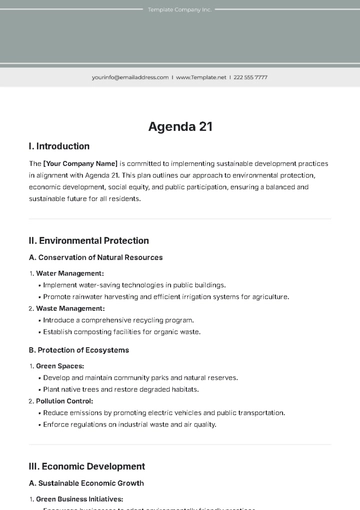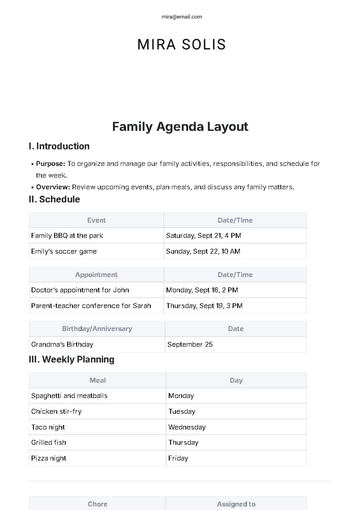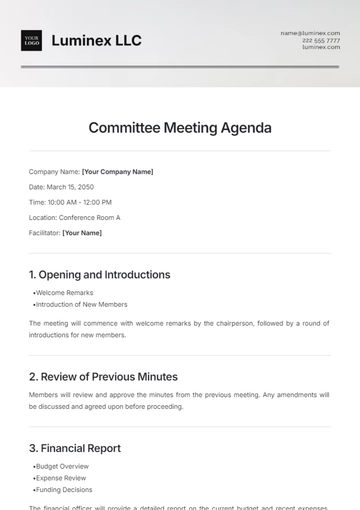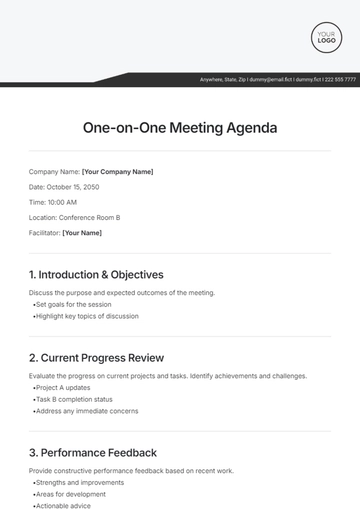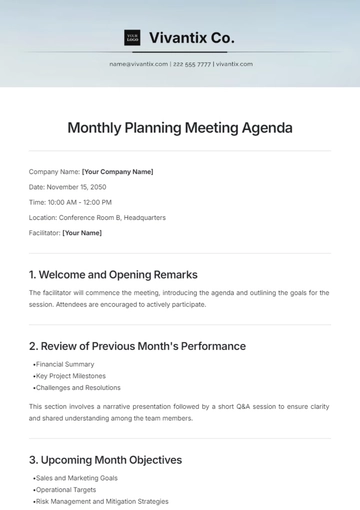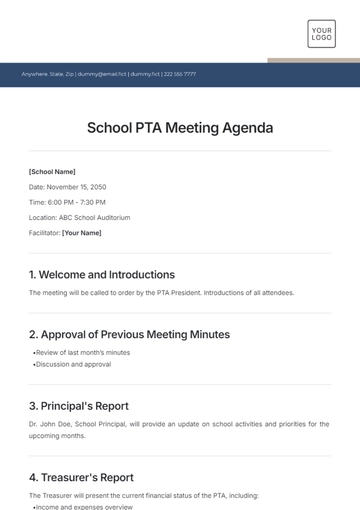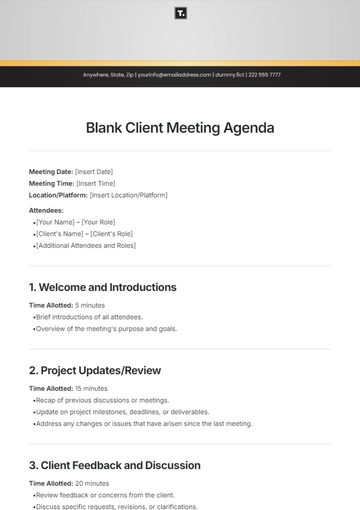A Sales Presentation Agenda Outline
Date: [Month Day, Year]
Location: [Room / Venue]
Hosted by: [Your Company Name]
Presenter’s Details
Presenter: [Your Name]
Presenter's Email: [Your Email]
1. Introduction (10 minutes)
a. Welcome and Introductions
Greet attendees warmly, introduce [Your Name], and briefly introduce the sales team.
Recognize any special guests or key stakeholders in attendance.
b. Overview of the Meeting Agenda
Explain the agenda's structure, highlighting key sections and their significance.
Mention the expected duration for each segment to manage time efficiently.
2. Company Overview (15 minutes)
a. Brief History of [Your Company Name]
Narrate the founding story, major growth milestones, and the evolution of the company.
Mention notable founders and their initial vision.
b. Mission and Vision Statements
c. Key Achievements and Milestones
3. Product/Service Presentation (30 minutes)
a. Detailed Description of Products/Services
Describe key features, benefits, and applications of the flagship product.
Use visual aids or slides for a clearer understanding.
b. Unique Selling Points
Discuss what sets the product apart, like an innovative feature or superior customer service.
Compare briefly with general market offerings.
c. Live Demonstrations (if applicable)
4. Market Analysis and Opportunities (20 minutes)
a. Industry Trends
b. Target Market Demographics and Psychographics
c. Competitive Analysis
5. Customer Success Stories (15 minutes)
a. Case Studies
b. Testimonials
c. Impact Metrics
6. Pricing and Packages (15 minutes)
a. Overview of Pricing Structures
b. Package Options
c. Discount and Promotion Plans
7. Q&A Session (20 minutes)
a. Open Floor for Questions
b. Additional Clarifications
8. Closing Remarks (5 minutes)
a. Summary of Key Points
b. Next Steps and Follow-Up Procedures
9. Networking and Refreshments (30 minutes)
a. Opportunity for One-on-One Discussions
b. Exchange of Business Cards
Notes:
Sales Templates @ Template.net
